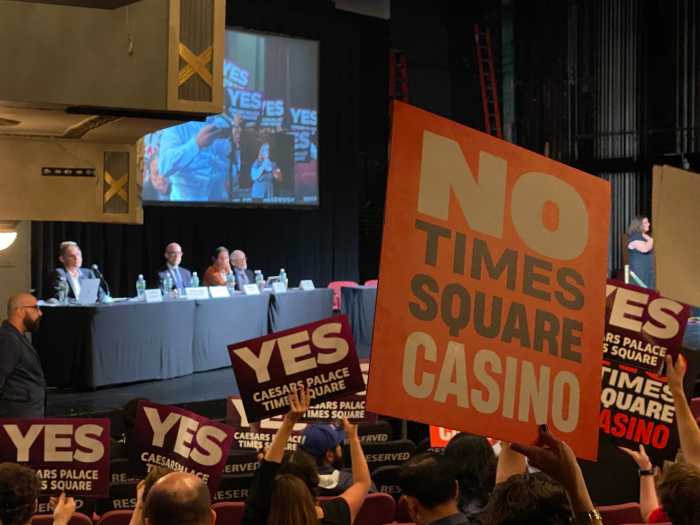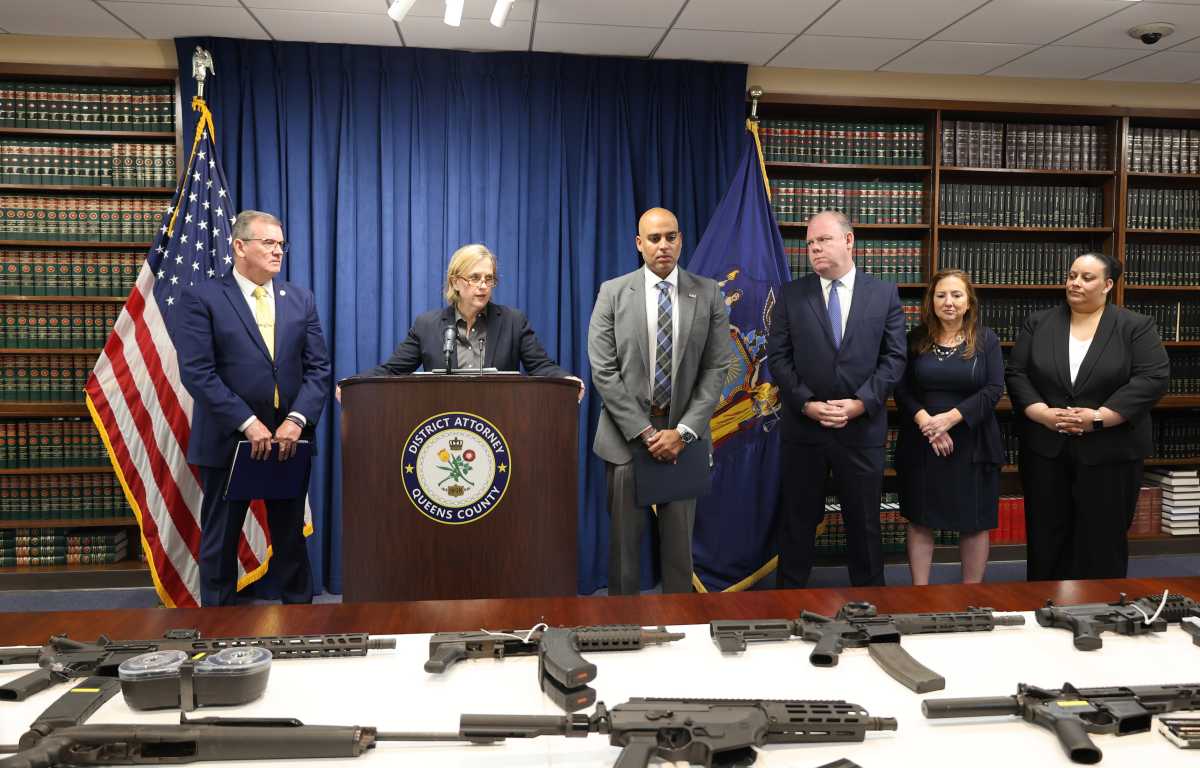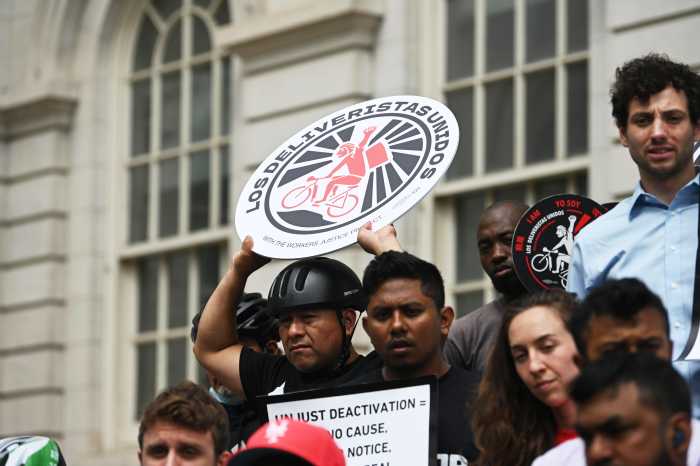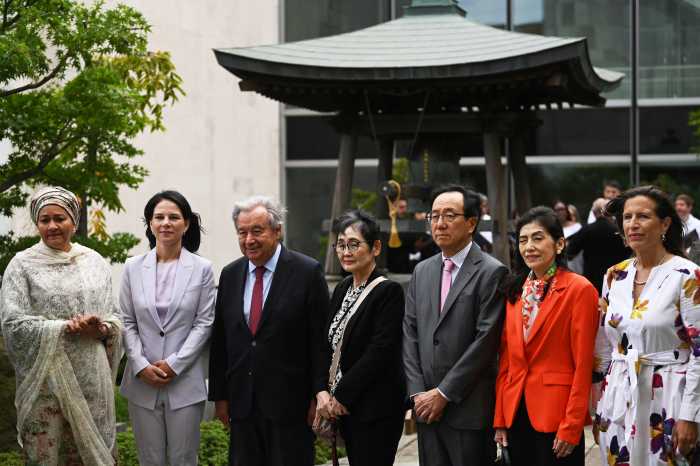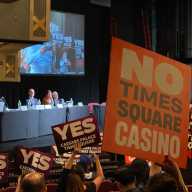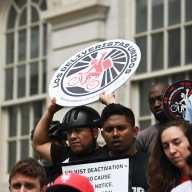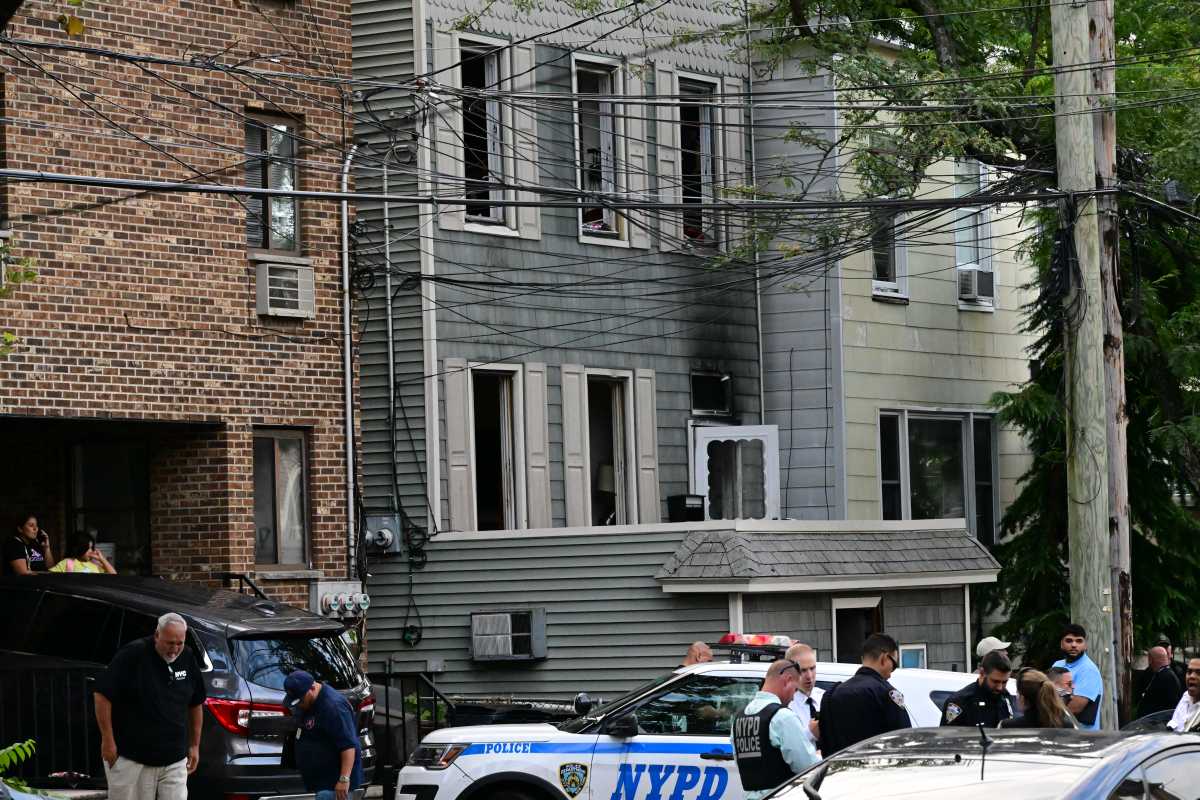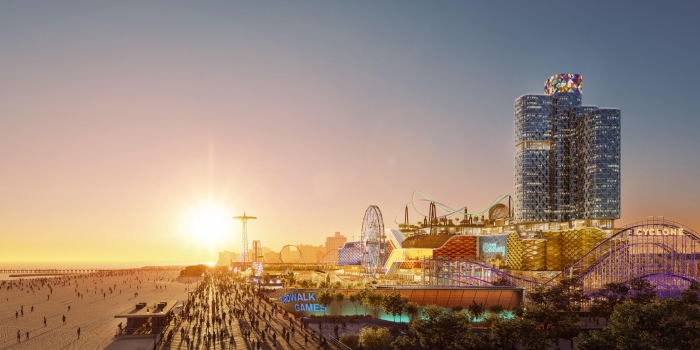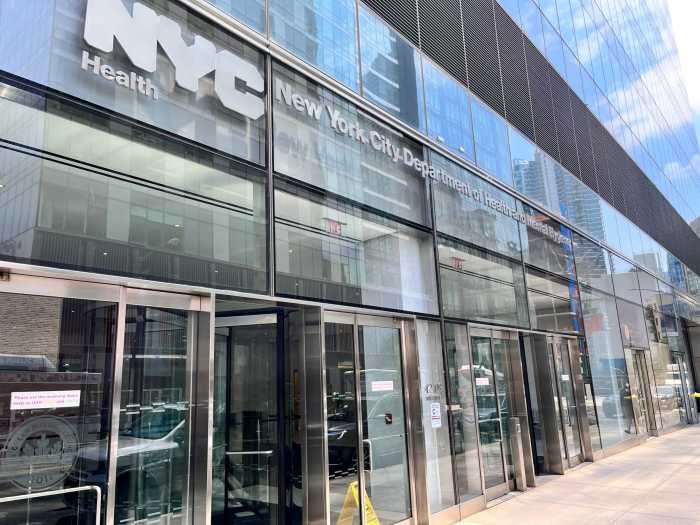BY ZACH WILLIAMS | As union leaders, immigration activists and Occupy Wall Street organizers finish preparations for May Day demonstrations, ‘occupiers’ remain on the steps of Federal Hall, poised to make their presence felt on the traditional labor holiday.
About two dozen ‘occupiers’ remain on the steps of Federal Hall on Wall Street, attempting to draw attention to the movement for social and economic justice. While the NYPD continues to enforce a ban against sleeping at the site, the demonstration is continuing within “a first amendment zone” in front of the building, first set up early last week following a showdown between police and the demonstrators.
The ‘occupiers’ have declined to seek a permit from the National Park Service that would allow more than 25 people to be within the metal barriers demarcating the zone. Some said they see the situation as an opportunity to see whether the federal government would crack down on their presence. According to National Park Service Spokesperson Daphne Yun, the decision to keep the demonstration to one side of the front steps was predetermined.
“Each (national) park has a First Amendment Area set up specifically so these exercises of First Amendment rights don’t disrupt the park’s operation,” said Yun. “This has not just been created; this has always been our First Amendment Area.”
Robert Reiss, a resident of nearby Rector Street, said Monday that the controls imposed on the demonstration are “abridgements of the Bill of Rights” an original copy of which is stored inside the historic building. The barricades though have not placed limits on his ability to share the message of Occupy Wall Street with passersby, he said.
“The conversations are very inspiring,” said Reiss. “People from China, Paris, Argentina, Japan — they tell of the struggles in their own country. These conversations are occasions of solidarity.”
The activists went to Federal Hall April 16 after NYPD officers swept demonstrators from Wall Street where they had slept each night since April 9 across from the New York Stock Exchange. Activists said the move violated a 2000 court decision upholding sleeping on sidewalks as a form of political protest.
Though the crowd was small at Federal Hall in the last week, the number of people in Lower Manhattan protesting corporate greed and alleged government malfeasance is expected to swell as next month nears.
Activists aim to have a total of 99 picket lines ready in time for May 1 in order to symbolically represent the “99 percent.” About 40 of the planned pickets were organized as of Monday night.
Tens of thousands are expected to gather May 1 at Union Square for a rally that has secured a permit from the city. Scheduled speakers will be joined by musicians Tom Morello, Dan Deacon, Immortal Technique, Das Racist and Bobby Sanabria as well as other performers.
A march to the Financial District, scheduled to begin at 5:30 p.m., will shut down Broadway, organizers said. The march will end at the MTA Headquarters where union members will rally in support of transit workers currently in contract negotiations.
More than 100 activist groups, labor unions and other progressive organizations have pledged to participate in the rally and march. Rhadames Rivera, vice president of SEIU Local 1199, said Monday that more than 12,000 union members are already signed up to participate. That number will likely grow dramatically this week, he added.
The inclusion of Occupy Wall Street in this year’s May Day activities has required that a certain balance be struck between the leaderless movement and more traditional organizations such as the labor unions. Representatives of the movement stressed at aN organizing meeting Monday that ‘occupiers’ should resist any efforts to regiment them.
Chris Silvera, secretary-treasurer of Teamsters Local 808, said at the meeting that labor leaders “fear” the potential for “anarchist” disruption to May Day plans.
“They feel a level of discomfort knowing that they are dealing with something which they don’t control,” said Silvera in an interview. “You know what I’m saying? And I think for the first time, labor is going to make a step to do something in which it is not in complete control. That’s huge.”
But he added that the time is ripe for activists from a wide spectrum of society to come out and demonstrate against a political system seen by activists as unresponsive to the needs of working and middle-class Americans.
“I want everybody to come out,” said Silvera. “I want everybody who is concerned about tomorrow… we need to have an America that is not based on war. We need to have an America based on people having good jobs, good education.”
While the planned May Day events will bring progressive organizations together in an organized fashion. It remains to be seen how successful Occupy Wall Street activists will be in orchestrating a general strike aimed at disrupting commercial activities in lower Manhattan. The activists are calling for “a day without the 99 percent” where supporters will refrain from working, banking, shopping and school.
As part of the effort, ‘occupiers’ have put out calls online to block “one or more” bridges or tunnels going into Manhattan. A “wildcat” march is planned to leave Sara D. Roosevelt Park the afternoon of May 1 before the Union Square rally. An online announcement of the action made April 20 underscored the determination of some segments of the Occupy Wall Street movement to resist outside influence, as well as the potential for May 1 to see fresh clashes between NYPD and ‘occupiers’.
“We were told by bosses, by activists, by union leaders we couldn’t strike. Perhaps they suggested, if we wanted to protest we could carry a sign and walk within police barricades, safely cordoned off in a free speech zone,” the statement read. “On May 1st, we aren’t working and we aren’t protesting. We are striking.”



